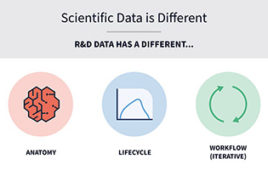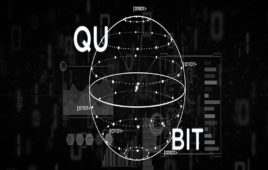In case you missed them, here’s another chance to catch our most visited stories. Multiple telescopes revealing striking black hole action; new proof of Einstein’s General Theory of Relativity; machine learning and big data can tell it wasn’t you who just swiped your card; a time-lapse from space reveals a glacier in motion; Katherine Johnson — the girl who loved to count; unveiling the turbulent times of a dying star; negative consequences of the rush to calculus for students and STEM; and celebrating Fibonacci Day are all among the top stories.
 Celebrating Fibonacci Day 2015
Celebrating Fibonacci Day 2015
Have you ever pulled petals off of a daisy? If you looked closely at the center, you would have seen that it is not solid, but made up of sets of spirals radiating out from the center. And it’s not just daisies. If you look at the bottom of a pinecone, it has the same kinds of spirals. To understand the spirals in pinecones, daisies, pineapples, and many other things in nature, we can look to Leonardo Pisano, better known as Fibonacci.
 The Rush to Calculus is Bad for Students and their Futures in STEM
The Rush to Calculus is Bad for Students and their Futures in STEM
Two years ago, I taught a section of Calculus I to approximately 650 undergrads in a large auditorium. Perhaps “taught” isn’t the right word. “Performed,” maybe? Unsurprisingly, my student evaluations were not as high as they usually are in my more typical classes of 35 students. I particularly remember one comment: “This class destroyed my confidence.” According to a new Mathematical Association of America report, this outcome is common.
 Unveiling the Turbulent Times of a Dying Star
Unveiling the Turbulent Times of a Dying Star
Running sophisticated simulations on a powerful supercomputer, researchers have glimpsed the unique turbulence that fuels stellar explosions. All the stars in the sky will eventually die — and some will really go out with a bang. When a dying star goes supernova, it explodes with such ferocity that it outshines the entire galaxy in which it lived, spewing material and energy across unimaginable distances at near-light speed.
 Katherine Johnson: The Girl Who Loved to Count
Katherine Johnson: The Girl Who Loved to Count
“I counted everything. I counted the steps to the road, the steps up to church, the number of dishes and silverware I washed … anything that could be counted, I did.” So said Katherine Johnson, recipient of the 2015 National Medal of Freedom. Born in 1918 in the little town of White Sulfur Springs, WV, Johnson was a research mathematician, who by her own admission, was simply fascinated by numbers.
 Time-lapse from Space Reveals Glacier in Motion
Time-lapse from Space Reveals Glacier in Motion
Animations that compress 25 years of satellite images into just one second reveal the complex behavior and flow of glaciers in the Karakoram mountain range in Asia. A glaciologist used images captured by three different Landsat satellites to create time-lapse sequences of four regions: Baltoro, Panmah, Skamri-Sarpo Laggo and Shaksgam. This mountain range is home to some of the highest peaks in the world, including the famous K2.
 Machine Learning and Big Data Know It Wasn’t You Who Just Swiped Your Credit Card
Machine Learning and Big Data Know It Wasn’t You Who Just Swiped Your Credit Card
You’re sitting at home minding your own business when you get a call from your credit card’s fraud detection unit asking if you’ve just made a purchase at a department store in your city. It wasn’t you who bought expensive electronics using your credit card — in fact, it’s been in your pocket all afternoon. So, how did the bank know to flag this single purchase as most likely fraudulent?
 HPC Researcher offers New Proof of Einstein’s General Theory of Relativity
HPC Researcher offers New Proof of Einstein’s General Theory of Relativity
A researcher has predicted a physical effect that would help physicists and astronomers provide fresh evidence of the correctness of Einstein’s general theory of relativity. To be able to test general relativity is of crucial importance. This is especially so in regions close to a black hole, because current evidence for Einstein’s general relativity mainly comes from regions where the gravitational field is very weak.
 Multiple Telescopes Reveal Striking Black Hole Action
Multiple Telescopes Reveal Striking Black Hole Action
Scientists often use the combined power of multiple telescopes to reveal the secrets of the Universe — and this image is a prime example of when this technique is strikingly effective. The yellow-hued object at the center of the frame is an elliptical galaxy known as Hercules A, seen by the Earth-orbiting NASA/ESA Hubble Space Telescope. In normal light, an observer would only see this object floating in the inky blackness of space…




